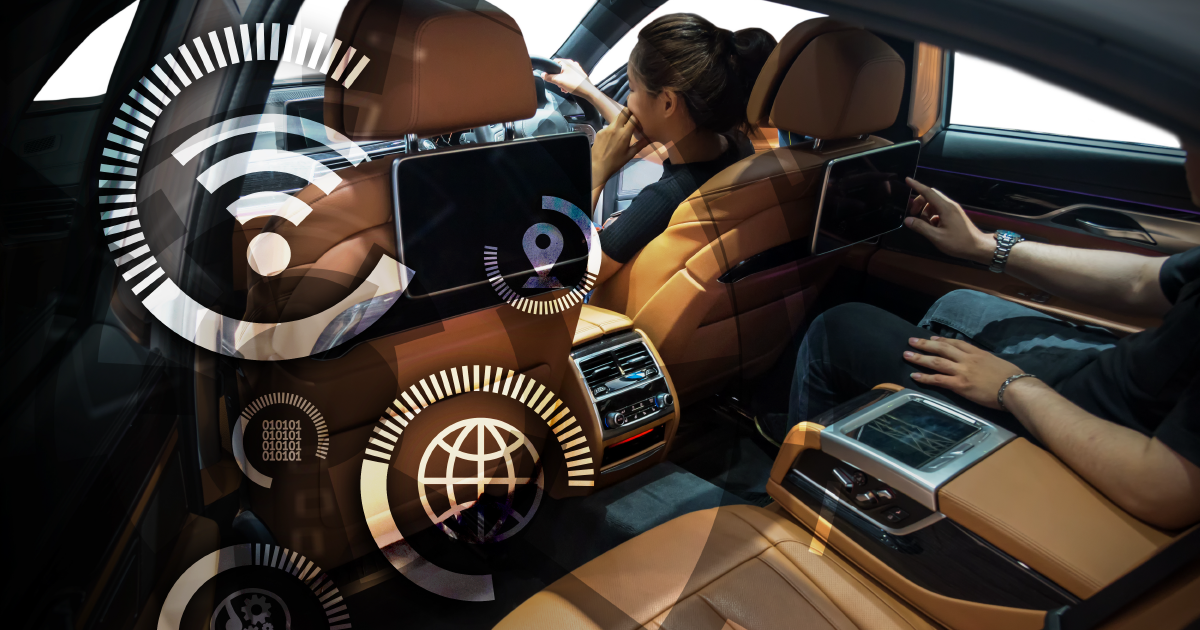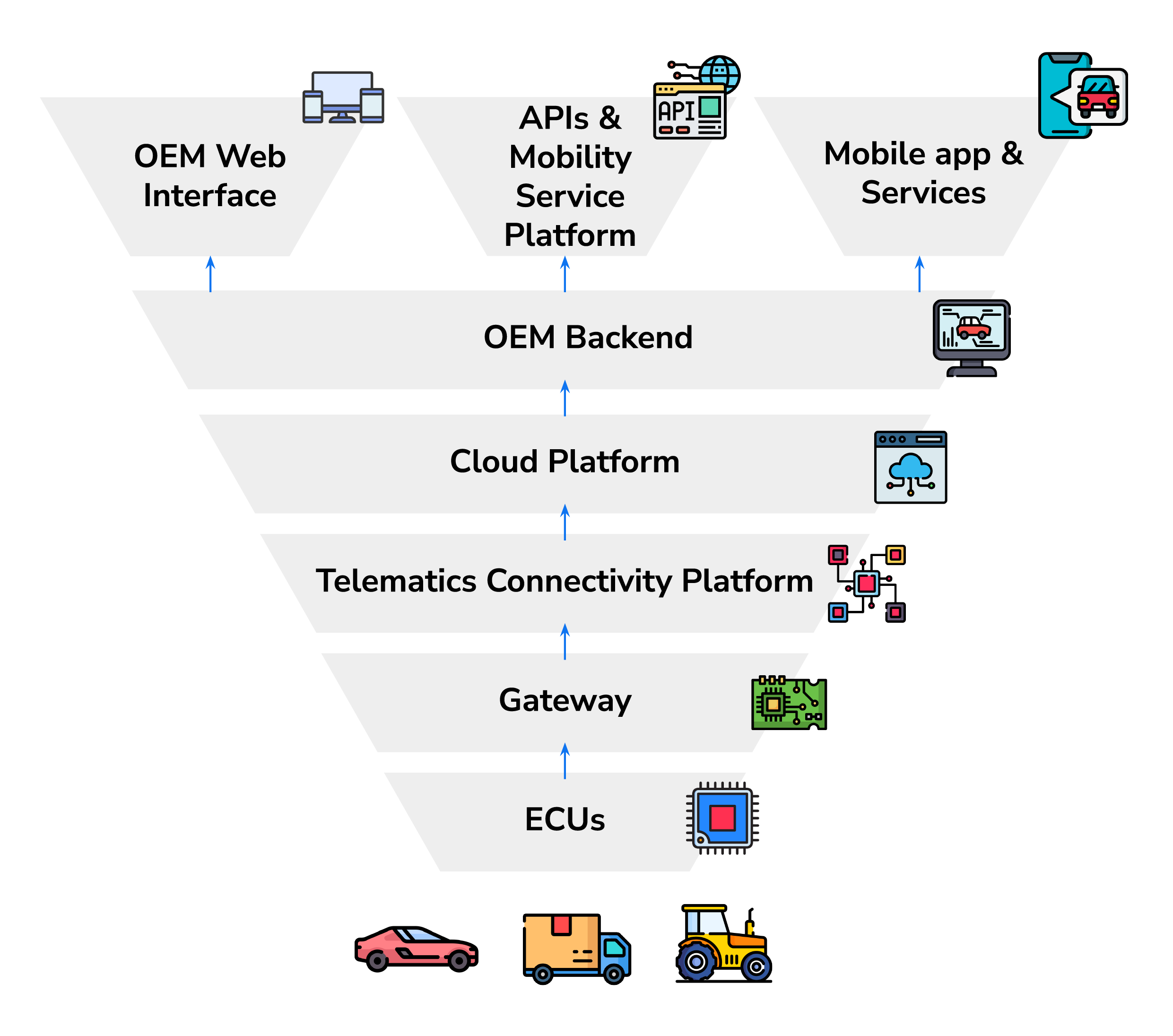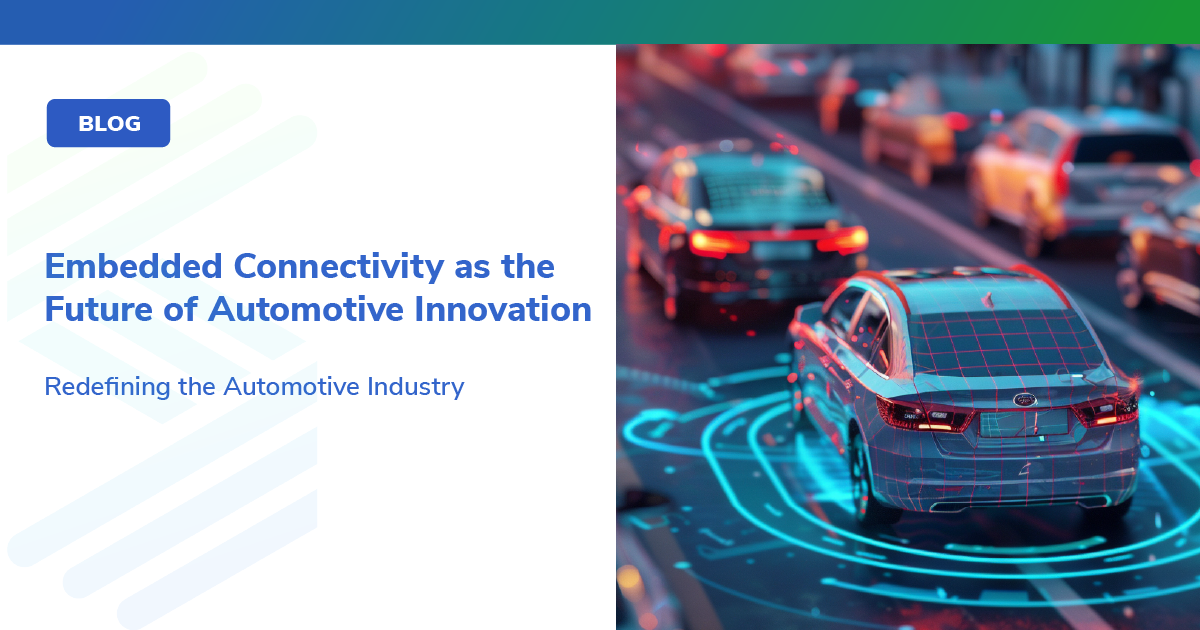
/
November 23, 2021
/
#
Min Read
Beyond IVI: The Future of the 4-Wheel Connected Vehicle Platform is Deeper
When it comes to the vehicles we drive for work or pleasure, connectivity has become a primary enabler of safety, security, functionality and performance of the software-defined car. Consumers have come to expect shiny new in-vehicle tech each year, while OEMs move towards advanced E/E architecture and research domain centralization to simplify automotive software and data management. A recent survey by McKinsey & Company shows that 36% and 56% of consumers in the United States and China respectively would be willing to change brands for better connectivity and according to the World Economic Forum the market for connected cars is expected to be worth over $215 billion by 2027. However, not all connected vehicles are created equal. Many OEMs have launched connected cars or trucks year-over-year, yet predominantly limited to smartphone tethering, OTA updates for infotainment systems, maps and apps, or basic remote diagnostics. Looking towards the the future, the possibilities are endless as OEMs begin to leverage full embedded connectivity to reinvent the digital vehicle experience, keep maintenance and service costs low and innovate new connected services.
Connected Four-Wheeler Landscape
From hatchbacks and trucks to luxury sedans or SUVs, all 4-wheeler OEMs have plans to expand their connected capabilities and data-driven services to improve vehicle marketability, reduce costs and increase post-sale revenues. Real time access to all in-vehicle domains and ECUs with seamless cloud connectivity are the crucial elements behind these imperatives, which form the backbone of the modern connected vehicle platform.
OEMs are investing and expanding connectivity to reach beyond infotainment apps to support deeper telematics data abstraction, full vehicle Over-the-Air (OTA) software updates, advanced connected diagnostics and more. A deep connected vehicle approach holds great promise to revolutionize the ownership experience and provide new opportunities for all stakeholders in the value chain, from OEMs to dealer partners, fleet managers and end-users alike.
Today, most OEMs use a connected vehicle platform that is IVI focused, and in many cases with the help of the user's smartphone. Most have yet to however, harness the power of real-time data logging and core ECU software updates on critical systems such as powertrain, transmission, body controls, suspension, ADAS, ABS, and various sensors. With growing demand and increasing competition, innovating better-connected services from deep embedded systems is vital to staying ahead, and capitalizing on new routes to market such as fleet sales and Car and Truck-as-a-Service models.
Connected Four-Wheeler Use Cases
As OEMs begin to leverage deep and vehicle-wide connectivity, they open up a world of new possibilities to create a broad and diverse range of new connected car and truck use cases across the entire value chain, at any stage of the vehicle life cycle, from pre-production to post-sale:

OEM Considerations
OEMs have been closely following the various commercial or competitive connected car platforms across the industry, evaluating whether to build or buy, and in either case, are faced with justifying increased production costs. Many 4-wheeler manufacturers are already invested in some level of embedded connectivity to facilitate data abstraction up to the mobile app layer and vehicle cluster. However, developing a truly bi-directional vehicle-to-cloud system requires a tremendous amount of time, funding, expertise, coordination and focus. When dealing with both in-vehicle firmware and cloud connectivity, there is also a myriad of compliance requirements that must be met including UNECE WP.29, SOC II Type 1 and Type 2, GDPR, CCPA, ISO 26262, and ASPICE Level II & III.
A robust connected 4-wheeler platform ideally delivers upon the three core pillars for connected vehicle success: software updates, data collection, and remote/diagnostic commands - to and from every ECU and sensor, across various networks, geographies and the cloud. When equipped with such capabilities, OEMs can rollout core ECU software updates/upgrade campaigns to targeted vehicle populations or regions, collect high quality and precision data across global fleets, and innovate new connected services.
The effort to build such a platform requires dedicated cross-functional teams and diverse skill sets including those of Backend Engineers, Frontend/Full Stack Engineers (web and mobile), UI/UX Designers, Site Reliability Engineers (SREs), Infrastructure and DevOps Engineers, Cloud and Firmware Security Experts, Firmware Engineers, System Integration Engineers, Firmware Validation Engineers, Product Managers, Technical Program Managers, Functional Safety Experts, Data Scientists, ML Engineers, and more.
For OEMs that don't have a working solution today, building a full connected vehicle platform takes upwards of 3 to 5 years, which translates into lost opportunity, marketshare and revenue. Fortunately, with the help of product-based connected vehicle solutions, Service Oriented Architecture and API-driven integration, OEMs can accelerate the journey to building a deep connected vehicle platform and ecosystem.
Seamless ECU & Cloud Connectivity
Achieving connectivity to every ECU is the fundamental prerequisite for building a deep connected vehicle, yet is easier said than done. While domain centralization aims to solve this problem, the industry is not yet there. For the foreseeable future, cars will still require complex networks of multiple ECUs to control domains and functions across various hardware components sourced from multiple suppliers. Yet irrespective of the vehicle architecture used, a software-based connected vehicle platform can facilitate seamless data transfer between ECUs, as well as between the vehicle gateway and the cloud.
Disparate ECUs are connected with different bus structures, albeit CAN, Ethernet, FlexRay or LIN, therefore the embedded firmware has to be flexible and reliable enough to gather edge data from every ECU, with or without special software agents required. The firmware must also be designed in a manner to facilitate safe and secure ECU to ECU and ECU to TCU and/or gateway communication that utilizes cryptographic and authentication protocols. Furthermore, as cars evolve to higher autonomous levels and OEM fleets become fully electrified, the connected vehicle platfrom will play a vital role in keeping vehicles operating at peak performance while safeguarding it from from malicious attacks throughout the entire lifetime of the vehicle.
A deep connected vehicle platform should also maintain seamless connectivity to the cloud with smart data collection tools to log any set of vehicle data parameters, at anytime, throughout its lifecycle - from proving grounds testing to delivery and after-sale. With the help flexible data logging software, cloud computing and API-driven integration, OEMs can collect real time actionable data to build and monetize new data-hungry business models. A seamlessly cloud connected car therefore establishes the foundation for which OEMs can build an OTA ecosystem around with a myriad of new connected services.
Deep Connected Vehicle Platform
The Deep Connected Platform from Sibros utilizes and all-in-one approach with embedded firmware and IoT edge cloud computing models that distributes compute resources across local nodes with flexible API-driven integrations to bring the power of the cloud closer to vehicles and users, to accelerate connected and software-defined vehicle innovation.

How Can Sibros Help?
In summary a deep connected vehicle platform should have connectivity to every edge ECU with the ability to securely collect data and push software updates when and where required, with low latency and while meeting all required safety and security compliances. When layering in new capabilities to push and pull all software and data between many vehicles and the cloud, it's imperative OEMs adopt a connected platform that can do so with minimal impact on production time and cost, and within the limits of existing hardware and ECU configurations. Sibros' Deep Connected Platform serves the unique needs of OEMs with deep, safe and secure OTA software updates, data collection, remote commands, and fleet management from a single system. With unique, market-leading features such as selective logging, intelligent edge data filtering and compression, A/B and integral updates, software inventory management, fleet analytics, pre-packaged mobile apps and more, Sibros helps forward-thinking OEMs accelerate their journey to connected vehicle success. Contact us to learn more.











